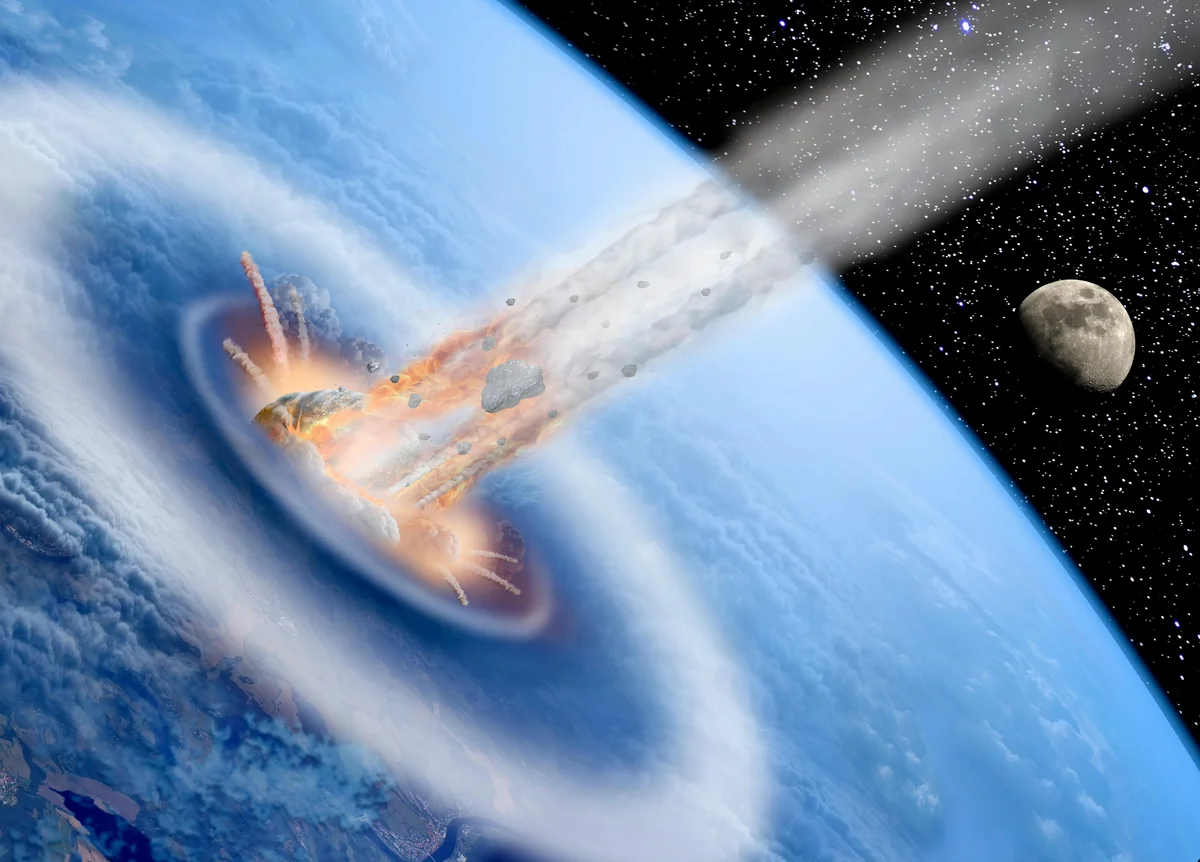
NASA Confirms 2% Chance of Asteroid Impact in 2032—What You Need to Know About 2024 YR4
NASA is closely monitoring an asteroid that may impact Earth in 2032, but the agency reassures the public that the likelihood of a collision remains “extremely low.” Despite the odds still being minimal, the chances of an asteroid strike have slightly increased since its initial detection, prompting further analysis.
The asteroid, named 2024 YR4, was first spotted on December 27, 2024, by the Asteroid Terrestrial-impact Last Alert System (ATLAS) station in Chile. This space rock, measuring between 130 and 300 feet in diameter, has sparked concern due to its proximity and size. While NASA’s current estimates show a 2.3% chance (or 1 in 43) that it could collide with Earth on December 22, 2032, this probability has nearly doubled since the initial figure of 1.2% released in late January 2025.
Growing, But Still Low: Asteroid Impact Chances
Although the chances of impact are still extremely small, the increasing probability has drawn attention. NASA explained that this uptick in likelihood is due to more data being gathered about the asteroid’s orbit. While the impact hazard could eventually be ruled out with further observation, there is also the possibility that the likelihood of a collision may continue to rise as researchers gain a clearer understanding of its trajectory.
For comparison, NASA noted that, historically, no known large asteroids had an impact probability higher than 1% at the time of initial detection, emphasizing just how rare and unlikely asteroid impacts are. Still, experts continue to monitor the situation closely.
What Would Happen if 2024 YR4 Hit Earth?
If 2024 YR4 were to strike Earth, the collision would likely occur at a high speed, around 38,000 mph. At this velocity, the asteroid could cause significant local damage upon impact. However, experts believe it would not pose a threat to the planet as a whole or humanity, especially considering its size compared to much larger asteroids that could cause global catastrophe.
The asteroid’s impact would likely affect a specific region, potentially creating substantial damage to infrastructure, but it would not have the devastating, planet-altering effects associated with larger space objects.
Continuous Monitoring of 2024 YR4
Since its initial detection, NASA has been actively tracking the asteroid’s movements using ground-based telescopes. The space rock is visible to observatories through April 2025, but it will become too faint to observe with current technology until June 2028. To gain further insight into its characteristics and trajectory, NASA’s James Webb Space Telescope is set to focus on 2024 YR4 in March 2025.
This analysis will provide researchers with more detailed information, allowing for better predictions of the asteroid’s path and the potential for any future risk. With advanced space technology and growing expertise in asteroid tracking, scientists remain optimistic that any possible threats can be identified well in advance.
Preparing for the Unknown
Though the chances of a collision are still very low, the fact that an asteroid of this size is approaching Earth has sparked conversations about planetary defense and space exploration. Should the probability of impact continue to rise, scientists have several strategies in place to mitigate the potential damage.
In the meantime, NASA and other space agencies will continue to monitor the asteroid and refine their predictions as more data becomes available. If the asteroid’s orbit changes or its collision probability rises significantly, further action, such as exploring deflection methods, could become a topic of discussion in the scientific community.
Conclusion: No Need to Panic—Yet
For now, the chances of asteroid 2024 YR4 striking Earth in 2032 remain extremely low, and experts emphasize that there is no immediate cause for alarm. However, as NASA continues its observations and gathers more information, it’s important to stay informed. With continued monitoring and advancements in asteroid detection technology, space agencies are working to ensure that the planet remains safe from potential threats in the future.
While the idea of an asteroid impact can be unsettling, the reality is that such events are incredibly rare. For now, the best course of action is to trust in the expertise of space agencies and stay updated on any developments regarding this particular asteroid.